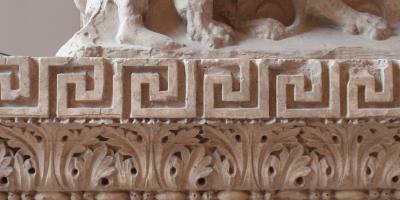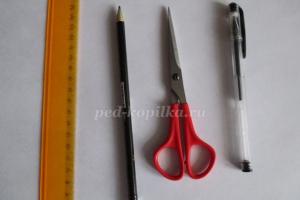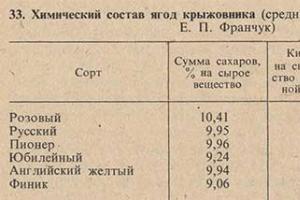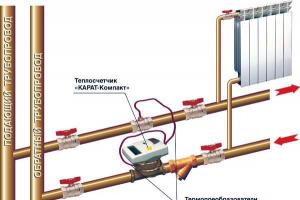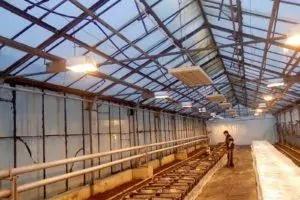Nowadays, production is becoming more and more frequent small parts made of wood, for certain structures. Also in stores you can find a variety of beautiful volumetric paintings, made on wood canvas. Such operations are performed using milling machines with numerical control. The accuracy of parts or pictures made of wood is achieved through control from a computer, a specialized program.
Wood milling machine with numerical control is a highly professional machine created with the latest technology.
All work consists of processing with a special wood cutter, which can be used to cut out small parts from wood material, creating beautiful drawings. The work is carried out by sending signals to stepper motors, which, in turn, move the milling cutter along three axes.
Due to this, high-precision processing occurs. As a rule, it is impossible to do such work manually with such high quality. Therefore, CNC wood milling machines are a great find for woodworkers.
Purpose
Since ancient times, milling was intended for planing work with wood. But the engine of progress moves strictly forward and in our time, numerical program control has been created for such machines. At this stage, the milling machine can perform a variety of actions that relate to wood processing:
- Cutting various parts made of solid wood.
- Cutting off excess parts of the workpiece.
- Possibility to make grooves and holes of various diameters.
- Drawing complex patterns using a cutter.
- 3D Three-dimensional images on solid wood.
- Full furniture manufacturing and much more.
Whatever the task, it will be completed with high precision and accuracy.
Tip: When working on homemade CNC equipment, you must smoothly remove the thickness of the wood, otherwise your part will be damaged or burned by the cutter!
Variety
In the modern technological world, the following types of numerically controlled wood milling machines are distinguished:
Stationary
These machines are used in production facilities, as they are huge in size and weight. But such equipment is capable of producing products in large volumes.
Manual
This homemade devices or devices from ready-made kits. These machines can be safely installed in your garage or your own workshop. These include the following subspecies:
Equipment using gantry, numerically controlled
The milling cutter itself is capable of moving along two Cartesian axes X and Z. This type of machine has high rigidity when processing bends. The design of a portal milling machine with numerical control is quite simple in its implementation. Many carpenters begin their knowledge of CNC machines with this subtype. However, in this case, the size of the workpiece will be limited by the size of the portal itself.
With numerical control and mobile portal
The design of this subtype is a little more complicated.

Mobile portal
It is this type that moves the router along all three Cartesian axes, X, Z and Y. In this case, it will be necessary to use a strong guide for the X axis, since all the large load will be directed to it.
With a mobile portal it is very convenient to create printed circuit boards. Along the Y axis it is possible to process long parts.

The cutter moves along the Z axis.
A machine on which the milling part is capable of moving in a vertical direction
This subtype is usually used when refining production samples or when converting drilling equipment into engraving and milling equipment.
The working field, that is, the tabletop itself, has dimensions of 15x15 centimeters, which makes it impossible to process large parts.
This type is not very convenient to use.
Gantryless with numerical control
This type of machine is very complex in its design, but it is the most productive and convenient.

Workpieces up to five meters long can be processed, even if the X axis is 20 centimeters.
This subtype is extremely unsuitable for the first experience, as it requires skills on this equipment.
Below we will look at the design of a hand-made CNC wood milling machine and analyze the principles of its operation. Let's find out how to do this brainchild and how such equipment is set up.
Design and principle of operation
The main parts of the milling device are the following:
bed
The actual design of the machine itself, on which all other parts are located.
Calipers
A unit that is a mount for supporting the movement of an automatic tool.
Desktop
The area where all necessary work is done.
Spindle shaft or router
A tool that performs milling work.
Wood milling cutter
A tool, or rather a device for a router, of various sizes and shapes, with the help of which wood is processed.
CNC
Let's just say the brain and heart of the whole structure. The software performs precise control of all work.
The work involves software control. A specialized program is installed on the computer; it is this program that converts the circuits loaded into it into special codes, which the program distributes to the controller and then to the stepper motors. Stepper motors, in turn, move the router along the coordinate axes Z, Y, X, due to which the wood workpiece is processed.
Selection of components
The main step in the invention homemade milling machine is the choice of components. After all, if you choose bad material, something can go wrong

An example of an aluminum frame assembly.
the work itself. Usually used simple materials, such as: aluminum, wood (solid wood, MDF), plexiglass. For the correct and accurate operation of the entire structure, it is important to develop the entire design of the calipers.
Tip: Before assembly with your own hands, it is necessary to check all already prepared parts for compatibility.
Check if there are any snags that will interfere. And most importantly, to prevent various types of vibrations, as this will directly lead to poor-quality milling.
There are some purposes for selecting work items that will help in creation, namely:
Guides

Scheme of CNC guides for a router.
For them, rods with a diameter of 12 millimeters are used. For the X axis, the length of the rod is 200 millimeters, and for the Y axis, the length is 90 millimeters.
The use of guides will allow for high-precision installation of moving parts
Calipers

CNC milling machine support.

The caliper is assembled.
Textolite material can be used for these components. Quite durable material of its kind. As a rule, the dimensions of the textolite pad are 25x100x45 millimeter
Router fixation block

An example of a frame for fixing a router.
You can also use a textolite frame. The dimensions directly depend on the tool you have.
Stepper motors or servo motors
power unit
Controller
An electronic board that distributes electricity to stepper motors to move them along their axes.
Tip: When soldering the board, you must use capacitors and resistors in special SMD cases (aluminum, ceramics, and plastic are used to make cases for such parts). This will reduce the dimensions of the board, and the internal space in the design will be optimized.
Assembly

Diagram of a homemade machine with numerical control
Assembly will not take you too much time. The only thing is that the setup process will be the longest in the entire manufacturing process.
To start
It is necessary to develop a diagram and drawings of a future numerically controlled machine.
If you don’t want to do this, you can download the drawings from the Internet. By all sizes prepare all the necessary details.
Make all the necessary holes
Designed for bearings and guides. The main thing is to observe all the required dimensions, otherwise the operation of the machine will be disrupted. A diagram describing the location of the mechanisms is presented. This will give you a general idea, especially if you are putting it together for the first time.
When all the elements and parts of the mechanism are ready, you can safely begin assembly. The first step is to assemble the equipment frame.
Frame
Must be geometrically correctly assembled. All angles must be even and equal. When the frame is ready, you can mount the axle guides, work table, and supports. When these elements are installed, you can install the router or spindle.
The last step remains - electronics. Installing the electronics is the main step in the assembly. A controller is connected to the stepper motors installed on the machine, which will be responsible for their operation.
Next, the controller is connected to a computer on which a special control program should already be installed. Widely applied trademark Arduino, which manufactures and supplies hardware equipment.
Once everything is connected and ready, it's time to run a test piece. Any wood that will not extend beyond the desktop is suitable for this. If your workpiece has been processed and everything is in order, then you can begin the full production of this or that milling product.
Safety precautions
Safety with milling equipment is fundamental. If you don't take care of yourself, you can end up in the hospital with serious injuries. All safety rules are the same, but the most basic ones are listed below:
- It is necessary to ground your equipment to avoid electric shock.
- Keep children away from the machine.
- Do not eat or drink at your desk.
- Clothing should be selected appropriately.
- Do not process bulky parts that exceed the size of the work table or machine equipment.
- Do not throw various instruments to the working area of the machine.
- Do not use material (metal, plastic, etc.).
Video reviews
Video review of parts for the machine and where to get them:
Video review of the operation of a wood milling machine:
Video review of electronics
The goal of this project is to create a desktop CNC machine. It was possible to buy finished machine, but its price and dimensions did not suit me, and I decided to build a CNC machine with the following requirements:
- usage simple tools(you only need a drilling machine, band-saw and hand tools)
- low cost (I was focusing on low cost, but still bought elements for about $600, you can save a lot by buying elements in relevant stores)
- small footprint (30"x25")
- normal working space(10" X-axis, 14" Y-axis, 4" Z-axis)
- high cutting speed (60" per minute)
- small number of elements (less than 30 unique)
- available elements (all elements can be purchased in one hardware store and three online stores)
- possibility of successful processing of plywood
Other people's machines
Here are a few photos of other machines collected from this article

Photo 1 – Chris and a friend assembled the machine, cutting out parts from 0.5" acrylic using laser cutting. But everyone who has worked with acrylic knows that laser cutting this is good, but acrylic doesn't hold up well to drilling and there are a lot of holes in this project. They did Good work, more information can be found on Chris's blog. I especially enjoyed making a 3D object using 2D cuts.

Photo 2 - Sam McCaskill made a really nice tabletop CNC machine. I was impressed that he did not simplify his work and cut all the elements by hand. I'm impressed with this project.

Photo 3 - Angry Monk's used DMF parts cut out using laser cutter and gear-belt engines converted to propeller engines.

Photo 4 - Bret Golab's assembled the machine and configured it to work with Linux CNC (I also tried to do this, but could not due to the complexity). If you are interested in his settings, you can contact him. He did a great job!
I'm afraid I don't have enough experience and knowledge to explain the basics of CNC, but the CNCZone.com forum has an extensive section dedicated to homemade machines, which has helped me a lot.

Cutter: Dremel or Dremel Type Tool
Axes parameters:
X axis
Travel Distance: 14"
Speed: 60"/min
Acceleration: 1"/s2
Resolution: 1/2000"
Pulses per inch: 2001
Y axis
Travel Distance: 10"
Drive: Toothed belt drive
Speed: 60"/min
Acceleration: 1"/s2
Resolution: 1/2000"
Pulses per inch: 2001
Z axis (up-down)
Travel Distance: 4"
Drive: Screw
Acceleration: .2"/s2
Speed: 12"/min
Resolution: 1/8000"
Pulses per inch: 8000
Required Tools
I aimed to use popular tools that can be purchased at a regular DIY store.

Power tools:
- band saw or jigsaw
- drilling machine (drills 1/4", 5/16", 7/16", 5/8", 7/8", 8mm (about 5/16"), also called Q
- Printer
- Dremel or similar tool (for installation into a finished machine).
Hand tool:
- rubber hammer(for placing elements in place)
- hexagons (5/64", 1/16")
- screwdriver
- glue stick or spray glue
- adjustable wrench (or socket wrench with ratchet and 7/16" socket)
Necessary materials
The attached PDF file (CNC-Part-Summary.pdf) provides all costs and information about each item. Only generalized information is provided here.

Sheets --- $20
-A piece of 48" x 48" 1/2" MDF (any sheet material 1/2" thick will do. I plan to use UHMW in the next version of the machine, but now it is too expensive)
-Piece of 5"x5" 3/4" MDF (this piece is used as a spacer, so you can take a piece of any 3/4" material
Motors and Controllers --- $255
-You could write a whole article about the choice of controllers and motors. In short, you need a controller capable of driving three motors and motors with torque of around 100 oz/in. I bought the motors and a ready-made controller and everything worked well.
Hardware --- $275
-I bought these items in three stores. Simple elements I bought it at a hardware store, I bought specialized drivers at McMaster Carr (http://www.mcmaster.com), and I bought bearings, which I need a lot of, from an online seller, paying $40 for 100 pieces (it turns out to be quite profitable, a lot bearings are left for other projects).
Software ---(Free)
-You need a program to draw your design (I use CorelDraw) and I'm currently using a trial version of Mach3, but I have plans to move to LinuxCNC (an open source machine controller using Linux)
Head unit --- (optional)
-I installed Dremel on my machine, but if you are interested in 3D printing (eg RepRap) you can install your own device.
Printing templates
I had some experience with a jigsaw, so I decided to glue down the templates. Need to print PDF files with the templates placed on the sheet, glue the sheet onto the material and cut out the parts.

File name and material:
All: CNC-Cut-Summary.pdf
0.5" MDF (35 8.5"x11" template sheets): CNC-0.5MDF-CutLayout-(Rev3).pdf
0.75" MDF: CNC-0.75MDF-CutLayout-(Rev2).pdf
0.75" aluminum tube: CNC-0.75Alum-CutLayout-(Rev3).pdf
0.5" MDF (1 48"x48" Pattern Sheet): CNC-(One 48x48 Page) 05-MDF-CutPattern.pdf
Note: I am attaching the CorelDraw drawings in the original format (CNC-CorelDrawFormat-CutPatterns (Rev2) ZIP) for those who would like to change something.
Note: There are two file options for MDF 0.5". You can download a file with 35 pages 8.5"x11" (CNC-0.5MDF-CutLayout-(Rev3), PDF), or a file (CNC-(One 48x48 Page) 05- MDF-CutPattern.pdf) with one sheet of 48"x48" for printing on a wide format printer.
Step by step:
1. Download three PDF template files.
2. Open each file in Adobe Reader
3. Open the print window
4. (IMPORTANT) disable Page Scaling.
5. Check that the file has not been accidentally scaled. The first time I didn't do this, I printed everything at 90% scale, as described below.
Gluing and cutting out elements
Glue the printed templates onto the MDF and onto the aluminum pipe. Next, simply cut out the part along the contour.



As mentioned above, I accidentally printed the templates at 90% scale and didn't notice until I started cutting. Unfortunately, I didn't realize this until this stage. I was left with 90% scale templates and after moving across the country I had access to a full size CNC machine. I couldn't resist and cut out the elements using this machine, but I couldn't drill them with reverse side. That is why all the elements in the photographs are without pieces of the template.

Drilling
I didn't count exactly how many, but this project uses a lot of holes. The holes that are drilled at the ends are especially important, but take your time on them and you will rarely need to use a rubber hammer.
Places with holes in the overlay on top of each other are an attempt to make grooves. Perhaps you have a CNC machine that can do this better.
If you have made it this far, then congratulations! Looking at a bunch of elements, it’s quite difficult to imagine how to assemble the machine, so I tried to make detailed instructions, similar to LEGO instructions. (Attached PDF CNC-Assembly-Instructions.pdf). They look quite interesting step by step photos assemblies.



Ready!
The machine is ready! I hope you got it up and running. I hope the article didn't miss important details and moments. Here's a video showing the machine cutting out a pattern on pink foam board.

Knowing that milling machine CNC is considered complicated technical and electronic equipment; many craftsmen think that it simply cannot be done with their own hands.
However, this opinion does not correspond to reality: you can make such a device with your own hands, but for this you need to have not only its complete drawing, but also a set of certain tools and suitable components.
DIY CNC machine (drawings)
If you decide to create a homemade special CNC machine, remember that this can take a lot of time. In addition, you will need a lot of money.
To make a milling machine that is equipped with a CNC system, you can use 2 methods: purchase a ready-made set of specially selected parts from which such equipment is assembled, or find all the components and independently assemble a device that fully meets all your requirements.
Preparing for work
If you planned to make a CNC machine yourself, without using a ready-made kit, then the first thing you will need to do is stop at special scheme, according to which such a mini-device will work.

Equipment assembly
The base of the assembled milling equipment can be a rectangular beam, which must be firmly fixed on the guides.
 The supporting structure of the equipment must have great rigidity. When installing it, it is better not to use welded joints, but to connect all parts only with screws.
The supporting structure of the equipment must have great rigidity. When installing it, it is better not to use welded joints, but to connect all parts only with screws.
In milling equipment that you will assemble yourself, there must be a mechanism that will ensure the movement of the working device in the vertical direction. It is best to take a screw gear for it, the rotation of which will be transmitted using a toothed belt.
Main part of the machine
An important part of such a machine is its vertical axis, which homemade device can be made from aluminum plate. Remember to the dimensions of such an axis were precisely matched to the dimensions of the device being created.
In your home workshop it is advisable to have the simplest benchtop machines- drilling, grinding, etc. But if you need to perform precise work, then you cannot do without a milling unit. To do this, you can make a simple CNC machine yourself. This can be done in two ways:
A homemade CNC machine is necessary for precise drilling or cutting, as well as turning parts.
- buy a kit for making a similar design;
- make such a router yourself.
The first way is associated with certain financial costs. Branded machines for home use They have a relatively high price and not everyone can afford them.
CNC requires certain knowledge and mastery of tools to create it.
Where to start designing a homemade router?
First you need to choose suitable scheme unit. You can use a regular drilling machine as a basis, but instead of a drill, use a milling cutter as a working tool. Naturally, it will be necessary to think through the mechanism of its movement in three planes. Typically, for small units, recycled printer carriages are used, with the help of which the working tool can move in two planes. This is also beneficial from the point of view of connecting software for automatic operation. But such designs have one drawback - they allow you to process wood, plastic and thin sheets metal (1-2 mm).

Therefore, for more serious work, a CNC router must have high-power stepper motors. They can be made by modifying standard electric motors of this class, which will make it possible to abandon the use of a screw drive while maintaining all its advantages. To transfer force to the shaft, it is best to use timing belts.
When using homemade carriages to move the working tool, you can use parts from large printers. Below will be described one of homemade designs similar type.
Return to contents
Making a CNC router yourself
This machine in its design resembles examples of industrial units. It is based on a low beam of rectangular cross-section, directly attached to the guides. This allows you to obtain the desired structural rigidity and minimize welding work when creating a router.
The base is made of metal square pipe with a side of 75-85 mm. To attach to the guides, you need to use rectangular soles 65 x 25 mm. This eliminates the need for welding at this stage work and will help with fine-tuning the router. This is also necessary for correctly setting angles of 90 degrees. The main beam and the sole are connected using 4 M6 screws, which must be tightened all the way to obtain the desired rigidity. This will eliminate backlash, although deflection of the guides under heavy loads and problems with the plain bearings are possible (any suitable ones can be used, even Chinese ones).

The vertical lifting of the working tool is carried out using a screw drive, and a toothed belt is used to return rotation to lead screw. This makes it possible to avoid beating, lower the center of gravity of the unit and save space. The vertical axis itself is made of aluminum plate. It must be processed on a milling machine to the dimensions needed for a homemade machine. If your home workshop has a muffle furnace, it can be cast from aluminum.
Two stepper motors must be installed behind the axis: the first rotates the lead screw vertical displacement, and the second provides horizontal movement. Rotation is transmitted using belts. Some parts must be ordered from a turner if you do not have your own lathe.
After manufacturing all the elements and assembly, you need to check the CNC router in operation using manual control. After that, you need to work on stepper motor controllers and software. If you don’t have the appropriate knowledge, you can contact a company that has good programmers on staff.
You may also need a frame made of metal or artificial stone, which is better to order according to the required sizes.
Return to contents
What stepper motors can a homemade CNC have?
These are the most important elements of the future router.

In order to get such electric motors, you need to disassemble old dot matrix printers (for example, Epson). Inside such devices there are two stepper motors and good hardened steel rods. To build a router you need to have 3 electric motors, so you will have to disassemble 2 printers.
In order to simplify operations on a homemade machine, it is best to use motors with 5-6 control wires: they have good torque and are easy to work with. For correct software settings, you need to know the number of degrees per step, operating voltage and winding resistance.
To drive a homemade CNC, a nut and a stud are usually used. To secure the stepper motor shaft, a piece of thick-walled rubber cable is usually used; with its help, the electric motor is attached to the stud. Homemade bushings with a screw are used as clamps. They are made from nylon using a drill and file.
It is difficult to manufacture; in addition to the technical components, it has an electronic device that only a specialist can install. Contrary to this opinion, the opportunity to assemble a CNC machine with your own hands is great if you prepare the necessary drawings, diagrams and component materials in advance.
Carrying out preparatory work
When designing a CNC with your own hands at home, you need to decide according to what scheme it will work.
Often a used one is used as the basis for a future device.
Drilling machine can be used as a basis for a CNC machine
It will require replacing the working head with a milling head.
The greatest difficulty when designing a CNC machine with your own hands is the creation of a device with which the working tool moves in three planes.
Carriages taken from a conventional printer will help partially solve the problem. The tool will be able to move in both planes. It is better to choose carriages for a CNC machine from a printer that has large dimensions.
Such a scheme allows you to later connect control to the machine. The downside is that the CNC router only works with wood, plastic products, products from thin metal. This is due to the fact that the printer carriages do not have the required rigidity.
Attention must be paid to the engine of the future unit. Its role is reduced to moving the working tool. The quality of work and the ability to perform milling operations depend on this.
A good option for a homemade CNC router is a stepper motor.

An alternative to such an engine is an electric motor, previously improved and adjusted to the standards of the device.
Anyone using a stepper motor allows not to use a screw drive; this does not in any way affect the capabilities of such a CNC machine for wood. It is recommended to use toothed belts for milling on such a unit. Unlike standard belts, they do not slip on the pulleys.
It is necessary to correctly design the milling cutter of the future machine; for this you will need detailed drawings.
Materials and tools required for assembly
The general set of materials for a CNC machine includes:
- cable 14–19 m long;
- , wood processing;
- chuck for cutter;
- frequency converter having the same power as the spindle;
- bearings;
- control board;
- water pump;
- cooling hose;
- three stepper motors for three axes of structure movement;
- bolts;
- protective cable;
- screws;
- plywood, chipboard, wood board or metal structure to choose from as the body of a future device;
- soft type coupling.

When making your own, it is recommended to use a spindle with coolant. This will allow you not to turn it off every 10 minutes to cool down. Suitable for work homemade machine with CNC, its power is no less than 1.2 kW. The best option will become a 2 kW device.
The set of tools required for the manufacture of the unit includes:
- hammers;
- electrical tape;
- assembly keys;
- glue;
- screwdriver;
- soldering iron, sealant;
- grinder, it is often replaced with a hacksaw;
- pliers, welding unit, scissors, pliers.
Simple DIY CNC machine
Procedure for assembling the machine
A homemade CNC milling machine is assembled according to the following scheme:
- production of drawings and device diagrams indicating the electrical equipment system;
- purchase of materials containing a future homemade CNC machine;
- installation of the frame, on which the engines, working surface, portal, spindle will be mounted;
- portal installation;
- setting the Z axis;
- fixation work surface;
- spindle installation;
- installation of a water cooling system;
- installation of electrical system;
- connecting the board, with its help the device is controlled;
- software configuration;
- starting start of the unit.
The base for the frame is a material made of aluminum.

The frame needs to be made from aluminum
Profiles made from this metal are selected with a cross-section of 41*81 mm with a plate thickness of 11 mm. The frame body itself is connected using aluminum corners.
The installation of the portal will determine how thick the product can be processed by the CNC machine. Especially if it is made by yourself. The higher the portal, the thicker the product it can process. It is important not to install it too high, as this design will be less durable and reliable. The portal moves along the X axis and carries the spindle.
An aluminum profile is used as the material for the working surface of the unit. Often they take a profile that has T-slots. For home use it is accepted; its thickness is at least 17 mm.
After the frame of the device is ready, begin installing the spindle. It is important to install it vertically, since it will need to be adjusted in the future; this is done to fix the required angle.
To install the electrical system, the following components must be present:
- power unit;
- computer;
- stepper motor;
- pay;
- stop button;
- motor drivers.

The system requires an LPT port to operate. In addition, it is installed that controls the operation of the device and allows you to answer the question of how to perform this or that operation. The control is connected via motors to the milling machine itself.
After the electronics are installed on the machine, you will need to download drivers and programs necessary for operation.
Common assembly errors
A common mistake when assembling a numerically controlled machine is the lack of a drawing, but assembly is carried out according to it. As a result, omissions arise in the design and installation of apparatus structures.
Often, incorrect operation of the machine is associated with an incorrectly selected frequency converter and spindle.

For correct operation of the machine, it is necessary to select the correct spindle
In many cases, stepper motors do not receive proper power, so a special separate power supply must be selected for them.
It must be taken into account that a correctly installed electrical circuit and software allows you to perform numerous operations of varying levels of complexity on the device. A mid-level craftsman can make a CNC machine with his own hands; the design of the unit has a number of features, but with the help of drawings it is not difficult to assemble the parts.
It’s easy to work with a CNC built by yourself; you need to study the information base, carry out a series of training works and analyze the condition of the unit and parts. Do not rush, jerk moving parts or open the CNC.


